Services
Ear, Nose & Throat Problems
ENT Services
Professor Kotecha manages all Ear, Nose and Throat (ENT) problems affecting adults and children including paediatric ENT problems such as glue ear, tonsillitis, rhinitis and allergies.
His main sub-special interest is in snoring and obstructive sleep apnoea, a field in which he is a leading specialist. Dr Bhik Kotecha offers snoring consultations, newly developing therapies and solutions as well as surgery where necessary.
A list of common ENT problems and procedures is provided below. More detailed information can be found at ENTUK.
GROMMETS
Grommets are ventilation tubes that are inserted through the ear drum. Grommets are usually inserted to treat secretory otitis media with effusion also known as ‘Glue Ear’. The purpose of grommet insertion is to ventilate the middle ear and help with hearing impairment and speech development in young children, they spontaneously extrude between 6-18 months after insertion.
SEPTOPLASTY
This operation is done in patients with deviated nasal septum which causes nasal congestion/obstruction. After surgery nasal douching with saline is important. Flying, swimming and contact sports should be avoided for about 3 weeks.
ADENOIDS
Adenoid tissue is found at the back of the nose and enlargement can cause difficulty in breathing and/or middle ear problem (Eustachian tube dysfunction). Adenoidectomy would help relieve the above symptoms. Minimum of 4 hours post-operative observation on the ward would be necessary to ensure there is no problem with haemorrhage.
TONSILLECTOMY
Usually performed for recurrent sore throats or upper airway obstruction whereby there is difficulty with breathing during sleep. May be needed in children or adults. In some cases young adults presenting with halitosis (bad breath), this may be due to tonsilloliths (tonsil stones) and they may require tonsillectomy. Following the operation your throat will be sore for around 10 days but taking pain killers on a regular basis and maintaining good oral hygiene and food intake promotes healing.
SINUS SURGERY
Endoscopic sinus surgery is performed in patients suffering from nasal polyps or rhino-sinusitis. Surgery is performed though the nostrils, with no cuts or stitches on the face. Following surgery most patients will experience mild pain and a blocked nose. Nasal douching with saline is important. Flying, swimming and contact sports should be avoided for about 3 weeks.
SLEEP RELATED BREATHING DISORDERS
This condition requires investigation to assess upper airway obstruction and identify exactly where the obstruction is arising from. Sedation endoscopy is performed during sedation to identify the anatomical level of airway blockage.
RADIOFREQUENCY SURGERY
This procedure is used in the treatment of snoring and uses radiofrequency ablation to heat the tissue such as the lining of the nose, soft palate and the tongue. This either reduces bulky tissue or stiffens the tissue and reduces vibrations that may result in upper airway obstruction.
LASER SURGERY
Also used in the treatment of snoring, this involves the use of laser technology and can help when minimally invasive radiofrequency surgery has failed to improve snoring
SNORING TREATMENT MODALITY
Oral appliances or mandibular advancement devices may help some. If moderate or severe sleep apnoea is present then treatment of choice is nasal continuous positive airway pressure. In patients who can’t use appliances/devices, sedation endoscopy may help to identify if they would benefit from surgery
Snoring & Obstructive Sleep Apnoe
Snoring is an extremely common problem affecting up to 40% of the population. It can disrupt the quality of sleep of both the patient and the partner. About 10% of these patients can have a condition known as obstructive sleep apnoea whereby they have breath holding episodes in their sleep which can cause oxygen deprivation. This can result in poor sleep, morning headaches and daytime sleepiness. If sleep apnoea is left untreated then the chances of developing other disorders such as ischaemic heart disease, diabetes, memory problems and stroke can increase.

Pricing Information
Pricing structures and payment information can be obtained by contacting my private office.
For patients choosing an insurer to indemnify costs, the benefit levels are set by the insurance company and the insurance contract is between the patient and their insurer. This applies also to provider or facility charges.
It is essential therefore that you confirm your level of cover for treatment as any difference between the professional fee and that allowed by your insurer is your responsibility.

